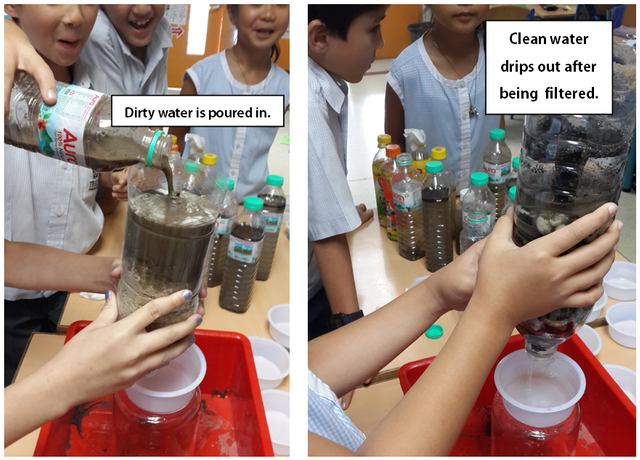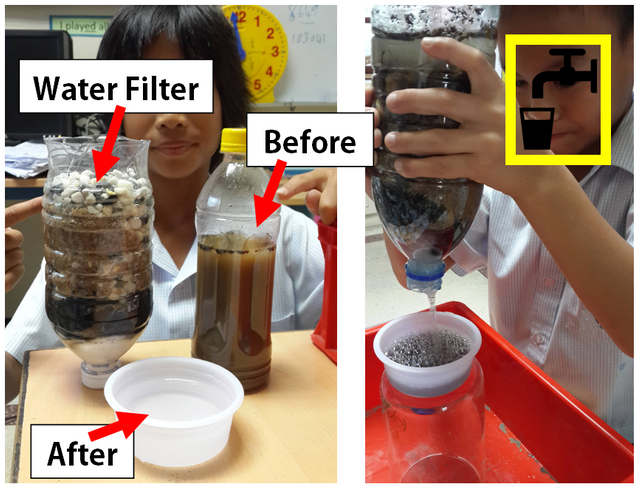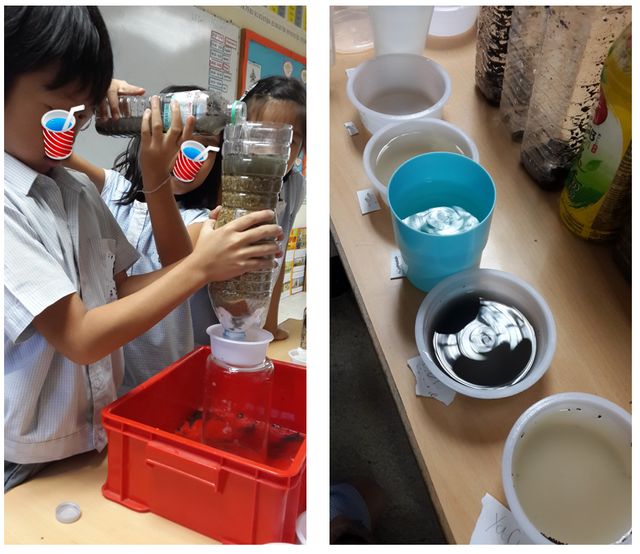Education. DIY water filters for kids. School survival project.
The curriculum for my Year 3 class led me to teach an 'outdoor' topic in English and a 'water cycle' unit in science. Basic survival skills interested the whole class and encouraged strong descriptive writing.
We had already learned about evaporation, transpiration, condensation, precipitation, surface run off and ground water, and that water is continuously recycled in a closed water cycle system.
Designing and testing a water filter was perfect for linking the main principals.

Students were given instructions on possible 'things' they could use. These products should be things that could easily be sourced, either from home or from an outdoor environment. They are as follows.
Large pebbles, rocks, or gravel.
Smaller stones or grit.
Sand.
Charcoal- activated charcoal or from a camp fire.
Cloth, material or fabric.
Cotton wool or sponge.
The listed items above should be layered inside a 'cut-open' plastic bottle in the order they are listed- gravel at the top, acting as the first step of filtration and cotton wool or sponge at the bottom to filter out the last remaining bits of dirt.
The suggested products can be swapped for alternatives or ignored if not available.

For more reliable results we found that the 'things' we put in the bottles to filter out the dirt would work better if 1. they were tightly packed/stuffed and 2. if they had been pre-cleaned (gravel, rocks, sand rinsed under the tap or flowing water).
.png)

The results varied for each student. However there were some extremely successful outcomes. The class also learned that even though the dirty water we started with appeared to be crystal clear once filtered (in some cases) that there could still be harmful bacteria in the water.
To ensure the final results were safe to drink, there must also be a 'boiling' step. Camp fires, and how to boil water safely was part of an English comprehension class covered a couple of days later.
.png)
If you liked the post as much as the kids, please don't forget to Follow for more :)